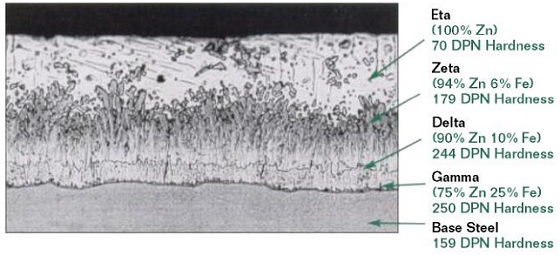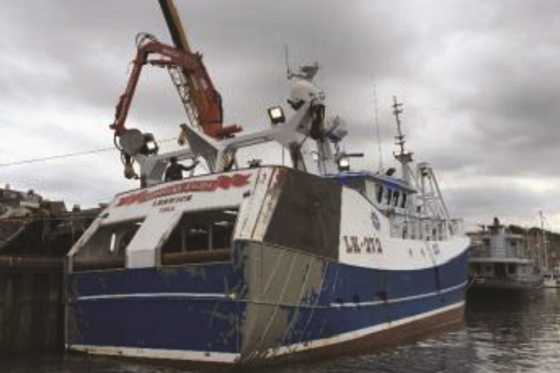Duplex zinc coatings offer remarkable protection against the effects of corrosion and have, consequently, been used for over 100 years to inhibit corrosion on steel structures. It is well documented that marine environments are extremely harsh due to the seawater and high salt content in the air.
In such areas, duplex zinc coatings are especially helpful thanks to the metallic zinc base layer that is applied prior to painting, which not only protects, but prolongs the service life of marine vessels and coastal steel structures.
AMPP member Martin Gagné with ZELIXIR, Inc. (Toronto, Ontario, Canada) notes in his 2021 CORROSION conference paper, from which this article is based, that commercial ships (such as tankers, cargo ships, tugs, fishing boats, ferries, cruise ships, etc.) play a considerable role in the global economy.1 He also emphasizes the dual effects of maintenance costs on commercial ships—the cost of corrosion maintenance and lost revenue from downtime.
Because managing corrosion is so costly, and paint coatings have significant limitations, including insufficient bond strength, holidays, and low abrasion resistance, the benefits of duplex zinc coatings are becoming increasingly recognized. Metallic zinc coatings, as opposed to paint, exhibit barrier protection along with cathodic protection to the steel below. In fact, the best means of protection involves using a metallic zinc base layer with paint as a topcoat. (This is referred to as a duplex coating.) The zinc works to protect the paint from underfilm corrosion at any scratches or holes that may arise, and the paint acts as a barrier for the zinc.
Fully immersing steel in molten zinc is known as hot-dip galvanizing. This process was patented in 1836 and has been effectively used ever since. Surface prep includes degreasing, pickling, and fluxing. Figure 1 shows the unique coating structure, consisting of several ironzinc layers and a top layer made of 100% zinc. This coating’s abrasion resistance is remarkable, owing to the tight bond amongst the layers and the fact that it is harder than the base steel and actually bonds to the steel instead of acting as merely a coating.

Limitations to galvanizing include the location it must take place (a factory, rather than on-site) and the size of the steel to be coated (structures must have the ability to be removed and must fit in the kettle).
Zinc can also be thermally sprayed when proper surface preparations are performed to include grit blasting. The benefit to this technique is that it can be performed both in the factory and in the field. Additionally, no curing time is required, nor are there any constraints as far as the size of the structure. Thermally sprayed zinc adheres well to steel, offers galvanic corrosion protection, and provides excellent paint adherence.
When coupled with a paint coating, galvanized and thermally sprayed zinc can last even longer. When used over a metallic zinc coating, instead of directly over the steel, the life of the paint is also increased. The zinc aids in sealing pores in the paint by migrating into it.
Following are several case studies pertaining to the effectiveness of metallic zinc coatings’ performance on steel ships. First is a white fish trawler, the Guardian Angell, built in 2015. Figure 2 shows the rear of the ship, clearly indicating the effectiveness of the thermally sprayed zinc that was applied prior to painting.

Although the paint has been damaged, the zinc layer is intact and continues to provide protection. To maintain the ship, spot painting has been performed on locally damaged areas, but no replacement of the zinc coating is required. An 80% savings in paint maintenance costs has been realized, along with an improved utilization rate of the ship, which added over 10% in uptime.
Next, the Danish trawler, Pernille Kim, was restored in July 2012 using zinc thermally sprayed coatings. Additionally, one coat of epoxy sealer and an epoxy mastic primer, an epoxy base coat, and a polyurethane finish were utilized on all surfaces above the water line. The Voyager, a trawler from Ireland, was built in 2017. All surfaces were coated with thermally sprayed zinc.
Also, the Malene S, a Norwegian trawler built in 2000 and refurbished in 2014, utilized duplex zinc coatings both inside the ship and above and below the water line (Figure 3). The zinc coatings below the water line enable a reduction in the number of sacrificial anodes needed to protect the hull and propellor shaft.
Next, the Marathon, a fishing ship out of Alaska, was built in 1998. Three fish transducer housings were thermally sprayed with zinc prior to painting the hull. The ship was painted with a primer and then an antifouling coating. In 2018, the transducers were replaced. Although scheduled antifouling paint maintenance was needed, the zinc coating on the three housings was still intact 20 years later.
And finally, the Ronja Polares, a Norwegian wellboat built in 2013, was thermally sprayed with zinc on all external areas.
Reviewing the data on these case studies shows the effectiveness of duplex zinc coatings at lessening the effects of corrosion on steel used in commercial fishing boats. These mitigating effects are evident internally and externally, and above and below the waterline. Furthermore, the use of the coatings reduces maintenance costs and lost revenue from downtime.
A recent webinar with further details on this topic is available online.
Reference
1 M. Gagné, “Corrosion Control of Steel Ships,” CORROSION 2021, paper no. 16481 (Houston, TX: NACE International, 2021).